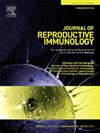Comparative analysis of oral, placental, and gut microbiota characteristics, functional features and microbial networks in healthy pregnant women
IF 2.9
3区 医学
Q3 IMMUNOLOGY
引用次数: 0
Abstract
Aim
Most studies on pregnant women focus on analyzing individual microbial species at specific body sites. This study aims to explore the characteristics, functions, and microbial networks of the oral, placental, and gut microbiota in healthy pregnant women.
Methods
A total of 23 healthy pregnant women were enrolled in this study. We analyzed the microbial composition, functional profiles, and microbial networks of the oral, placental, and gut microbiota using 16S rRNA gene sequencing.
Results
Our findings revealed significant differences in microbial composition across these three sites. The placental microbiota contained a relatively high proportion of low-abundance microorganisms, which were more diverse and evenly distributed compared to the gut and oral microbiota. The microbial composition at each site displayed distinct characteristics, likely influenced by environmental, physiological, and biological factors. The placental microbiota exhibited a complex network of tightly interconnected genera, whereas the gut microbiota showed sparser connections, with fewer closely related genera compared to the placental and oral microbiota. Functional differences were also observed among the three microbiota, with each playing a unique role in maintaining host health and metabolic balance. While the oral and gut microbiota shared functional similarities, the placental microbiota exhibited distinct functional characteristics.
Conclusions
This study provides valuable insights into the microbial communities of healthy pregnant women, offering important data for microbiological research during pregnancy and laying the foundation for future investigations into the roles of these microbial communities in maternal health.
健康孕妇口腔、胎盘和肠道微生物群特征、功能特征和微生物网络的比较分析
大多数关于孕妇的研究都集中在分析特定身体部位的个体微生物种类。本研究旨在探讨健康孕妇口腔、胎盘和肠道微生物群的特征、功能和微生物网络。方法选取23例健康孕妇为研究对象。我们使用16S rRNA基因测序分析了口腔、胎盘和肠道微生物群的微生物组成、功能特征和微生物网络。结果我们的研究结果揭示了这三个地点的微生物组成存在显著差异。胎盘微生物群中低丰度微生物所占比例较高,与肠道和口腔微生物群相比,低丰度微生物群的多样性和分布更加均匀。每个站点的微生物组成表现出不同的特征,可能受到环境、生理和生物因素的影响。胎盘微生物群表现出紧密联系的复杂网络,而肠道微生物群表现出较少的联系,与胎盘和口腔微生物群相比,密切相关的属较少。三种微生物群之间的功能差异也被观察到,每种微生物群在维持宿主健康和代谢平衡方面都发挥着独特的作用。虽然口腔和肠道微生物群具有相似的功能,但胎盘微生物群表现出不同的功能特征。结论本研究为健康孕妇的微生物群落提供了有价值的见解,为妊娠期微生物学研究提供了重要数据,为进一步研究这些微生物群落在孕产妇健康中的作用奠定了基础。
本文章由计算机程序翻译,如有差异,请以英文原文为准。
求助全文
约1分钟内获得全文
求助全文
来源期刊
CiteScore
6.30
自引率
5.90%
发文量
162
审稿时长
10.6 weeks
期刊介绍:
Affiliated with the European Society of Reproductive Immunology and with the International Society for Immunology of Reproduction
The aim of the Journal of Reproductive Immunology is to provide the critical forum for the dissemination of results from high quality research in all aspects of experimental, animal and clinical reproductive immunobiology.
This encompasses normal and pathological processes of:
* Male and Female Reproductive Tracts
* Gametogenesis and Embryogenesis
* Implantation and Placental Development
* Gestation and Parturition
* Mammary Gland and Lactation.

 求助内容:
求助内容: 应助结果提醒方式:
应助结果提醒方式:


